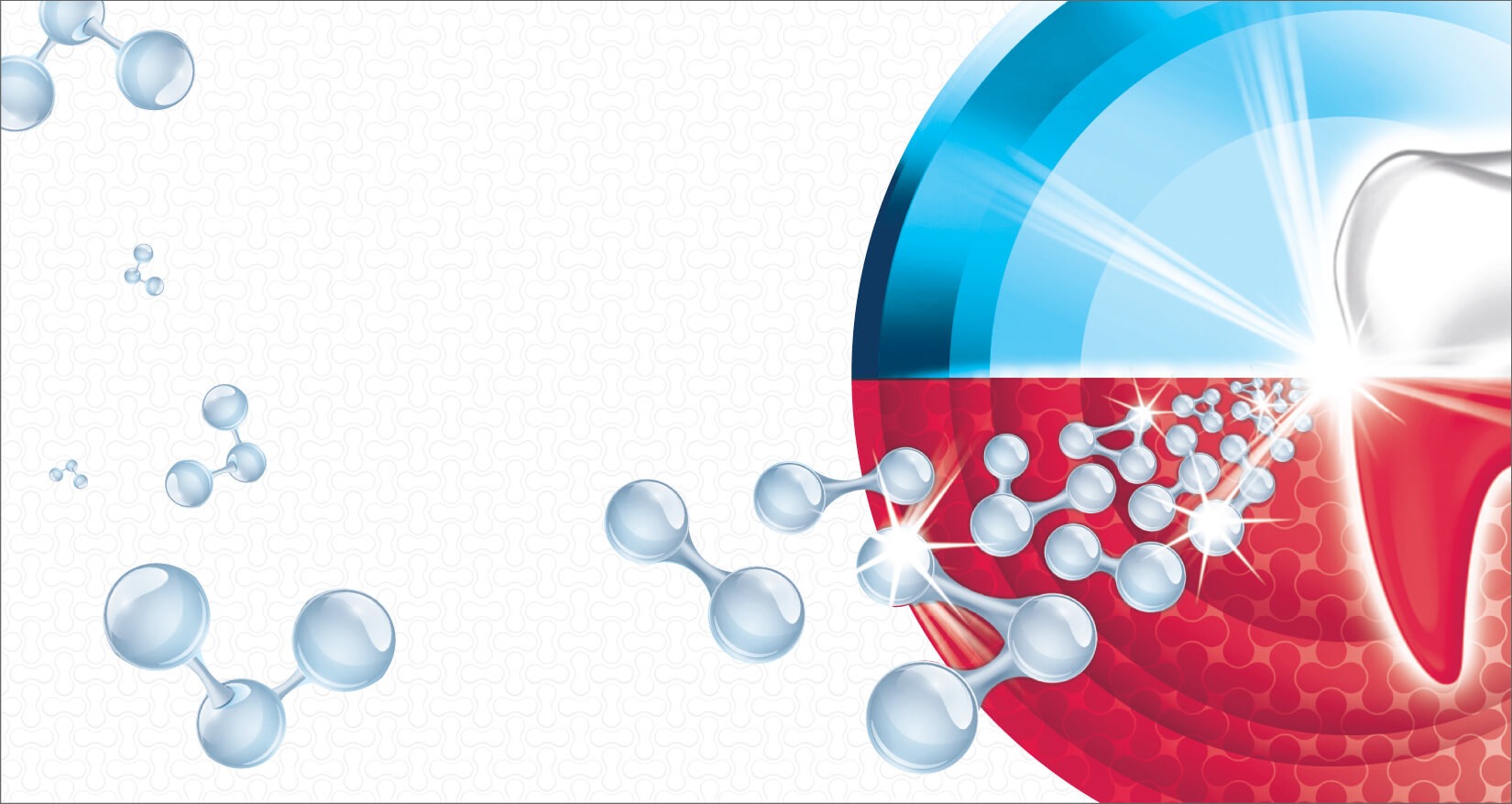 Infections originating from dental pulp are overwhelmingly triggered by the presence of several different strains of bacteria organised into polymicrobial biofilms.[i] Bacteria involved in endodontic infections can be Gram-positive or Gram-negative,[ii] and both types are implicated in the development of dangerous infections, as well as life-threatening sepsis.[iii] While both are difficult to eradicate, multidrug-resistant bacterial infections are primarily Gram-negative species, and these are increasing in prevalence, posing an urgent risk to global health.[iv]
Infections originating from dental pulp are overwhelmingly triggered by the presence of several different strains of bacteria organised into polymicrobial biofilms.[i] Bacteria involved in endodontic infections can be Gram-positive or Gram-negative,[ii] and both types are implicated in the development of dangerous infections, as well as life-threatening sepsis.[iii] While both are difficult to eradicate, multidrug-resistant bacterial infections are primarily Gram-negative species, and these are increasing in prevalence, posing an urgent risk to global health.[iv]
Methods to improve the management of endodontic infections often include the use of antimicrobial agents, irrigants, and instrumentation techniques that aim to disrupt biofilm structures, and eliminate infection by enhancing the penetration of disinfectants into the root canal system.i
Advances in understanding the biofilm biology in endodontic infections continue to inform the development of more effective treatment approaches. Knowledge of these systems is advantageous in proactively meeting the needs of patients, with the aim of preventing the need for retreatment.i
Some of the pathologies with endodontic origin
The process of pulpal injury or necrosis often begins with some form of damage to the dental pulp, resulting from dental caries, trauma, cracks, or other causes, leaving the endodontic system vulnerable to microbial infection.i Streptococci species, particularly S. mutans and S. sobrinus,[v] are commonly associated with dental caries and form 61% of these infections.[vi] Fungi and other microorganisms can also play a part.i
Obligate anaerobic bacteria dominate the microbiota in primary infections.[vii] This bacterium is part of the normal flora affecting skin and mucosa. Unable to tolerate oxygen, obligate anaerobes thrive through a fermentation process, and use organic compounds to proliferate.
As infection advances, polymicrobial biofilms form on dentinal surfaces within the root canal. Gram-negative anaerobes, such as Fusobacterium, Prevotella, and Porphyromonas, are involved in intra-radicular infections, as well as Gram-positive bacteria such as Enterococcus faecalis and Streptococcus species.vii E. faecalis, Actinomycetes, and Propionibacterium propionicum are the species most commonly involved in persistent root and extraradicular infections. Fusobacterium nucleatum is a Gram-negative anaerobic bacterium that is a key player in biofilm formation in the oral cavity and is associated with endodontic infections, pulp necrosis, and periapical periodontitis.[viii]
Chronic inflammation and the immune response in the periapical tissues can lead to the development of periapical pathology, including periapical granulomas and radicular cysts. Periapical lesions can also form as a response to bacterial endotoxins, and while some of them can be asymptomatic, others can lead to periapical abscesses or jaw bone osteomyelitis. Serious deep neck space infections can also form,ii with potentially life-changing or fatal consequences. Over 60% of deep cervical suppurations, are odontogenic in origin.[ix]
Management of infection
Treating endodontic infections typically involves root canal therapy (RCT). This aims to remove the infected pulp, disinfect the root canal system and, once the infection is eradicated, completely seal the canal to prevent reinfection. In some cases, surgical intervention may be necessary, particularly if there is persistent infection or periapical lesions are present.i
Sodium hypochlorite (NaOCl), the most widely used irrigant used in RCT, is an important antimicrobial agent which is the only irrigant currently capable of dissolving infected tissue, as well as disrupting biofilm disruption. It is particularly efficient against polymicrobial biofilms. The efficacy of irrigants can be optimised by increasing the temperature of the irrigation solution in the root canal, through agitation or ultrasonic activation.i Ethylenediaminetetraacetic acid (EDTA) is widely used as a chelating agent to disrupt the smear layer by bonding to calcium ions, preventing bacteria from collecting in dentinal tubules.[x]
The CanalPro® Endodontic Irrigating Solution from COLTENE is an excellent choice for ensuring safe and efficient treatment as well as a perfectly organised environment. CanalPro® Sodium Hypochlorite Solution (NaOCl) for irrigation/debridement of root canals during and after instrumentation is available in 3% or 6% formulas. A powerful 17% EDTA solution is also available for removing the smear layer. CanalPro® Syringe Station creates a neatly contained, spill-free area for filling syringes. For optimal efficiency, several units can be connected.
An awareness of the pathology involved in endodontic infections can not only ensure treatment is more effective, but can assist clinicians in more a more proactive and preventative approach to endodontic care that can save patients from reinfection, multiple retreatments and the risk of serious complications.
For more information, visit
https://colteneuk.com/rinsing-disinfection
email info.uk@coltene.com or call 0800 254 5115.
[i] Gliga A, Săndulescu M, Amza O, Stănescu R, Imre M. Dental pathologies of endodontic origin and subsequent bacterial involvement – a literature review. Germs. 2023 Dec 31;13(4):373-380. doi: 10.18683/germs.2023.1407. PMID: 38361538; PMCID: PMC10866160.
[ii] Noor A, Khetarpal S. Anaerobic Infections. [Updated 2023 Apr 24]. In: StatPearls [Internet]. Treasure Island (FL): StatPearls Publishing; 2025 Jan-. Available from: https://www.ncbi.nlm.nih.gov/books/NBK482349/
[iii] Ramachandran G. Gram-positive and gram-negative bacterial toxins in sepsis: a brief review. Virulence. 2014 Jan 1;5(1):213-8. doi: 10.4161/viru.27024. Epub 2013 Nov 5. PMID: 24193365; PMCID: PMC3916377.
[iv] Gauba A, Rahman KM. Evaluation of Antibiotic Resistance Mechanisms in Gram-Negative Bacteria. Antibiotics. 2023; 12(11):1590. https://doi.org/10.3390/antibiotics12111590
[v] Abranches J, Zeng L, Kajfasz JK, Palmer SR, Chakraborty B, Wen ZT, Richards VP, Brady LJ, Lemos JA. Biology of Oral Streptococci. Microbiol Spectr. 2018 Oct;6(5):10.1128/microbiolspec.gpp3-0042-2018. doi: 10.1128/microbiolspec.GPP3-0042-2018. PMID: 30338752; PMCID: PMC6287261.
[vi] K.C. Winkler, J. van Amerongen, Bacteriologic results from 4,000 root canal cultures, Oral Surgery, Oral Medicine, Oral Pathology, Volume 12, Issue 7, 1959, Pages 857-875, ISSN 0030-4220, https://doi.org/10.1016/0030-4220(59)90036-2.
[vii] Narayanan LL, Vaishnavi C. Endodontic microbiology. J Conserv Dent. 2010 Oct;13(4):233-9. doi: 10.4103/0972-0707.73386. PMID: 21217951; PMCID: PMC3010028.
[viii] Wieczorkiewicz K, Jarząbek A, Bakinowska E, Kiełbowski K, Pawlik A. Microbial Dynamics in Endodontic Pathology—From Bacterial Infection to Therapeutic Interventions—A Narrative Review. Pathogens. 2025; 14(1):12. https://doi.org/10.3390/pathogens14010012
[ix] Vrinceanu D, Dumitru M, Banica B, et al. (August 27, 2024) Suppurative Cervicomediastinitis From the Perspective of the Head and Neck Surgeon in a Tertiary Treatment Unit. Cureus 16(8): e67912. DOI 10.7759/cureus.67912
[x] Rajakumaran A, Ramesh H, Ashok R, Balaji L, Ganesh A. Smear Layer Removal and Microhardness Alteration Potential of a Naturally Occurring Antioxidant – An In Vitro Study. Cureus. 2019 Jul 25;11(7):e5241. doi: 10.7759/cureus.5241. PMID: 31565639; PMCID: PMC6759042.k













